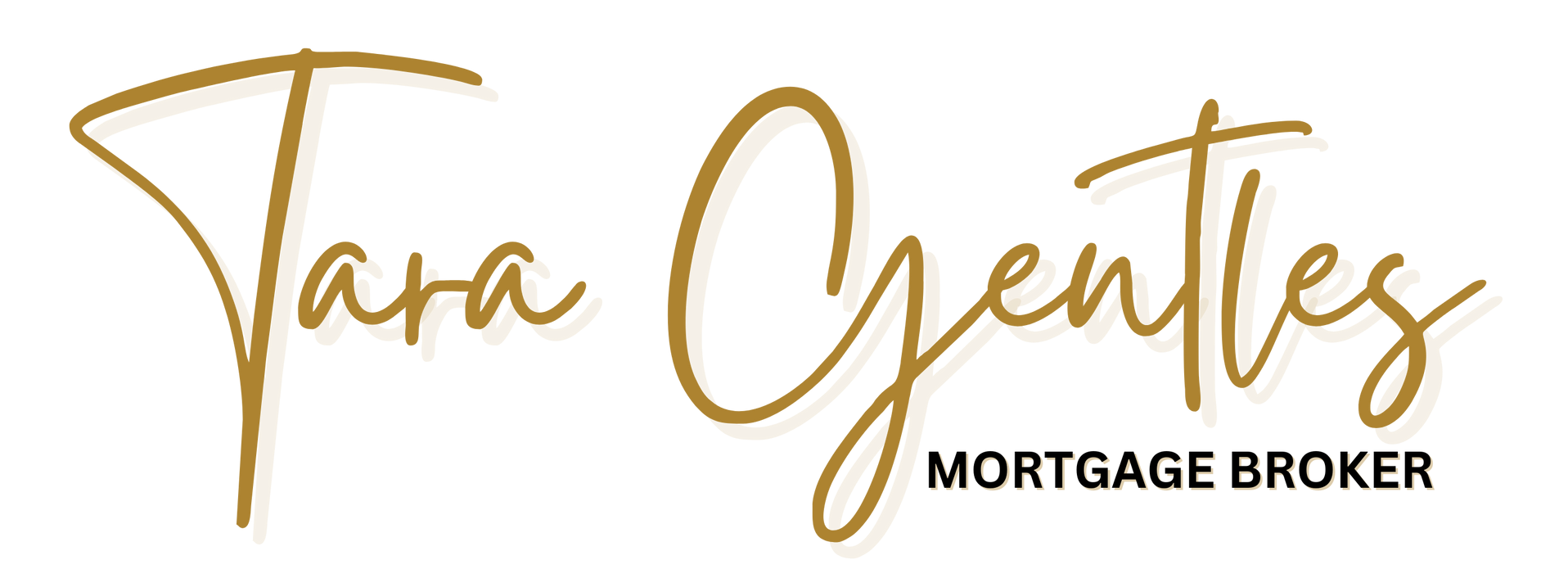Latest in Mortgage News, COVID-19, and Economic Recovery.
Tara Gentles • June 24, 2020

Although the volume of news over the last month has been pretty tame in comparison to when COVID-19 initially hit, there has still been a lot going on. If you find yourself wondering about the current state of affairs as it relates to real estate, mortgage financing, and the recovery of our economy mid and post-pandemic, you've come to the right place!
Here is a quick recap, a look forward, and links to many good sources of information!
Questionable economic outlook.
Back in the third week of May, the head of the Canadian Mortgage and Housing Corporation (CMHC) made some pretty gloomy predictions.
These Included a potential decrease in house prices of 18%, a jump in mortgage deferrals by 20% from 12% by September, and a debt-to-GDP ratio jump from 99% to 130% by Q3.
However, this particular economic outlook wasn't widely accepted in the mortgage industry and was seen more as an absolute worst-case scenario. Despite this, CMHC went ahead and made changes to their underwriting guidelines
and qualifying criteria for insured mortgages.
CMHC changes policy for insured mortgages.
On June 4th, 2020, CMHC announced that they would be making changes to their underwriting qualification effective July 1st 2020.
Essentially, they have lowered the buying power of anyone looking for an insured mortgage by up to 10% by limiting the Gross/Total Debt Servicing (GDS/TDS) ratios to 35% and 42% respectively. They changed the credit score requirements to a minimum of 680 for at least one borrower. While they also removed non-traditional sources of down payment that increase indebtedness, (borrowed downpayment). A gifted downpayment from a family member is still acceptable.
Genworth and Canada Guaranty don't plan on changing guidelines.
In response to CMHC's changes, the other two mortgage insurers in Canada made announcements that they would not be changing their guidelines.
"Genworth Canada believes that its risk management framework, its dynamic underwriting policies and processes and its ongoing monitoring of conditions and market developments allow it to prudently adjudicate and manage its mortgage insurance exposure, including its exposure to this segment of borrowers with lower credit scores or higher debt service ratios," said Stuart Levings, President and CEO.
"Canada Guaranty confirms that no changes to underwriting policy are contemplated as a result of recent industry announcements... Given implementation of the qualifying stress test and historic default patterns, Canada Guaranty does not anticipate borrower debt service ratios at time of origination to be a significant predictor of mortgage defaults."
So although CMHC is taking a very pessimistic view towards our economic recovery and has made it harder to qualify for an insured mortgage going forward, Genworth and Canada Guaranty will be there to make sure more Canadians have access to insured mortgage products.
Economic Outlook from the Bank of Canada.
On June 22nd, Tiff Macklem, the new governor of the Bank of Canada, released his first public press release called Monetary Policy in the Context of COVID-19.
"Currently, we expect growth to resume in the third quarter. The economy will get an immediate boost as containment measures are lifted, people are called back to work, and households resume some of their normal activities. But it will be important not to assume that these growth rates will continue beyond the reopening phase. The pandemic is likely to inflict some lasting damage to demand and supply. The recovery will likely be prolonged and bumpy, with the potential for setbacks along the way."
Conference Board of Canada.
In a sizeable release, the Conference Board of Canada shared their Canadian Outlook Summary: Summer 2020.
"With the worst of the recession likely over, the outlook for 2021 is brighter. The economy is forecast to rebound by 6.7 per cent in 2021 and 4.8 per cent in 2022. As the threat of the pandemic eases, how well the reopening of the economy and the withdrawal of government support is managed will be a crucial determinant of the economy's trajectory over the next several years."
Business as usual.
By all accounts, it's business as usual amid this global pandemic. Although COVID-19 has impacted the number of houses being bought and sold, prices haven't dropped. CMHC has made it harder to qualify for an insured mortgage through them, but you have two other insurers providing options, so it's not a big deal.
If you're looking to make a move or need to discuss mortgage financing, please don't hesitate to contact me anytime. I would love to work with you!
Tara Gentles
CANADIAN MORTGAGE EXPERT

RECENT POSTS

By Tara Gentles
•
February 11, 2025
If you have a variable rate mortgage and recent economic news has you thinking about locking into a fixed rate, here’s what you can expect will happen. You can expect to pay a higher interest rate over the remainder of your term, while you could end up paying a significantly higher mortgage penalty should you need to break your mortgage before the end of your term. Now, each lender has a slightly different way that they handle the process of switching from a variable rate to a fixed rate. Still, it’s safe to say that regardless of which lender you’re with, you’ll end up paying more money in interest and potentially way more money down the line in mortgage penalties should you have to break your mortgage. Interest rates on fixed rate mortgages Fixed rate mortgages come with a higher interest rate than variable rate mortgages. If you’re a variable rate mortgage holder, this is one of the reasons you went variable in the first place; to secure the lower rate. The perception is that fixed rates are somewhat “safe” while variable rates are “uncertain.” And while it’s true that because the variable rate is tied to prime, it can increase (or decrease) within your term, there are controls in place to ensure that rates don’t take a roller coaster ride. The Bank of Canada has eight prescheduled rate announcements per year, where they rarely move more than 0.25% per announcement, making it impossible for your variable rate to double overnight. Penalties on fixed rate mortgages Each lender has a different way of calculating the cost to break a mortgage. However, generally speaking, breaking a variable rate mortgage will cost roughly three months of interest or approximately 0.5% of the total mortgage balance. While breaking a fixed rate mortgage could cost upwards of 4% of the total mortgage balance should you need to break it early and you’re required to pay an interest rate differential penalty. For example, on a $500k mortgage balance, the cost to break your variable rate would be roughly $2500, while the cost to break your fixed rate mortgage could be as high as $20,000, eight times more depending on the lender and how they calculate their interest rate differential penalty. The flexibility of a variable rate mortgage vs the cost of breaking a fixed rate mortgage is likely another reason you went with a variable rate in the first place. Breaking your mortgage contract Did you know that almost 60% of Canadians will break their current mortgage at an average of 38 months? And while you might have the best intention of staying with your existing mortgage for the remainder of your term, sometimes life happens, you need to make a change. Here’s is a list of potential reasons you might need to break your mortgage before the end of the term. Certainly worth reviewing before committing to a fixed rate mortgage. Sale of your property because of a job relocation. Purchase of a new home. Access equity from your home. Refinance your home to pay off consumer debt. Refinance your home to fund a new business. Because you got married, you combine assets and want to live together in a new property. Because you got divorced, you need to split up your assets and access the equity in your property Because you or someone close to you got sick Because you lost your job or because you got a new one You want to remove someone from the title. You want to pay off your mortgage before the maturity date. Essentially, locking your variable rate mortgage into a fixed rate is choosing to voluntarily pay more interest to the lender while giving up some of the flexibility should you need to break your mortgage. If you’d like to discuss this in greater detail, please connect anytime. It would be a pleasure to walk you through all your mortgage options and provide you with professional mortgage advice.

By Tara Gentles
•
January 28, 2025
Credit. The ability of a customer to obtain goods or services before payment, based on the trust that you will make payments in the future. When you borrow money to buy a property, you’ll be required to prove that you have a good history of managing your credit. That is, making good on all your payments. But what exactly is a “good history of managing credit”? What are lenders looking at when they assess your credit report? If you’re new to managing your credit, an easy way to remember the minimum credit requirements for mortgage financing is the 2/2/2 rule. Two active trade lines established over a minimum period of two years, with a minimum limit of two thousand dollars, is what lenders are looking for. A trade line could be a credit card, an instalment loan, a car loan, or a line of credit; basically, anytime a lender extends credit to you. Your repayment history is kept on your credit report and generates a credit score. For a tradeline to be considered active, you must have used it for at least one month and then once every three months. To build a good credit history, both of your tradelines need to be used for at least two years. This history gives the lender confidence that you’ve established good credit habits over a decent length of time. Two thousand dollars is the bare minimum limit required on your trade lines. So if you have a credit card with a $1000 limit and a line of credit with a $2500 limit, you would be okay as your limit would be $3500. If you’re managing your credit well, chances are you will be offered a limit increase. It’s a good idea to take it. Mortgage Lenders want to know that you can handle borrowing money. Now, don’t confuse the limit with the balance. You don’t have to carry a balance on your trade lines for them to be considered active. To build credit, it’s best to use your tradelines but pay them off in full every month in the case of credit cards and make all your loan payments on time. A great way to use your credit is to pay your bills via direct withdrawal from your credit card, then set up a regular transfer from your bank account to pay off the credit card in full every month. Automation becomes your best friend. Just make sure you keep on top of your banking to ensure everything works as it should. Now, you might be thinking, what about my credit score, isn’t that important when talking about building a credit profile to secure a mortgage? Well, your credit score is important, but if you have two tradelines, reporting for two years, with a minimum limit of two thousand dollars, without missing any payments, your credit score will take care of itself, and you should have no worries. With that said, it never hurts to take a look at your credit every once and a while to ensure no errors are reported on your credit bureau. So, if you’re thinking about buying a property in the next couple of years and want to make sure that you have good enough credit to qualify, let’s talk. Connect anytime; it would be a pleasure to work with you and help you to understand better how your credit impacts mortgage qualification.
Let's Talk!
Contact Us
Thank you for contacting us.
We will get back to you as soon as possible.
We will get back to you as soon as possible.
Oops, there was an error sending your message.
Please try again later.
Please try again later.
© 2025
Copyright Tara Gentles. All Rights Reserved.
Privacy Policy | BrokerSquared Paragon Mortgage Group Is powered by Tango Financial

